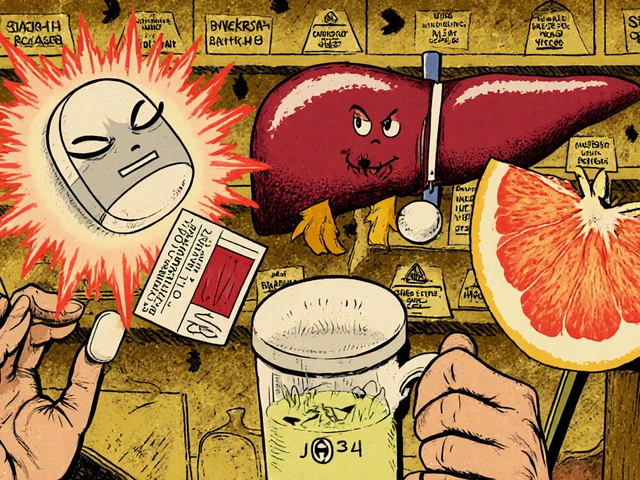If you’ve ever stared at a medicine bottle and thought, “Do I really need to take this every week?” or “Wouldn’t monthly be easier?”—you’re not alone. When it comes to bisphosphonates like alendronate and risedronate, the debate over weekly versus monthly dosing is not just about convenience. Sticking with the schedule can make or break your results, but side effects can be the dealbreaker that sends the pills back to the cabinet. And here’s a little insider scoop: even my beagle Buster knows the importance of routine, though he’s more focused on daily treats than bone health.
How Adherence Varies with Weekly and Monthly Schedules
Let’s be real—swallowing a pill for osteoporosis isn’t as thrilling as remembering your friend’s birthday or getting a bonus at work. But missing doses might mean your bones miss out on much-needed help. Adherence, or how closely people stick to their treatment schedule, is the unsung hero of medication success. Multiple studies have shown that with more complicated schedules or pills that just don’t mesh with daily life, folks start to slip. For bisphosphonates, this matters a lot. If you miss doses, the medicine can’t do its job.
So, how do weekly and monthly schedules compare? Data from a real-world 2023 study showed that about 45% of patients on a weekly schedule were still taking their bisphosphonate pills at 12 months, while nearly 55% on a monthly plan reported sticking with it. Those numbers don’t sound amazing, but in the world of chronic medications, they aren’t bad either. The difference adds up, especially as therapy for osteoporosis usually continues for years.
Why does monthly seem to win out? Habit. It’s just easier to remember and less disruptive to life. People with busy workweeks, travel, or just plain forgetfulness say remembering to take something once a month fits better with their lives. Imagine syncing your pill to pay day or the first weekend of the month—suddenly, you’re remembering it like clockwork. Some folks find that a weekly schedule helps keep the routine strong, kind of like Sunday night meal prep. Others, especially those with lots of other meds, say monthly feels like a relief. There’s no perfect answer for everyone.
If you want to dive deeper into dosing schedules, especially with once-a-week alendronate dosing, check out this related post: once-a-week alendronate dosing.
Side-Effect Showdown: Does Frequency Matter?
If you’ve ever had heartburn or that dreadful ‘stuck in your throat’ feeling after a pill, you know the struggle with bisphosphonates. These meds aren’t shy about causing digestive grumbles. The main side effects most people talk about are heartburn, nausea, stomach pain, and sometimes muscle or joint aches. Rare ones include jaw problems and really weird things like “eye inflammation” (yup, it’s in the fine print).
Here’s where it gets interesting: the side-effect profiles don’t swing wildly between weekly and monthly. The big difference is in intensity versus frequency. For most, taking the pill less often reduces how often you “risk” a bad experience—but some people report that the larger dose in monthly pills hits harder all at once. It’s like drinking one strong coffee instead of two mild ones. A survey in 2022 found that about 25% of folks on weekly alendronate reported mild to moderate GI upset, while 20% of those taking the monthly version had the same issue—but the monthly crew were more likely to say the side effect was “severe enough to skip the next dose.”
This tradeoff can make decision-making tricky. The less frequent you take it, the bigger impact each dose can have. For anyone with a sensitive gut or a history of stomach problems, even one rough experience can mean ghosting the next pill altogether. That’s where tips like taking the tablet with a huge glass of plain water (seriously, a full 8 ounces or more) and staying upright for 30-60 minutes come into play. People often forget that lying down or taking it with juice makes things worse. I’ve even taped reminders to my coffee maker—no lie, that trick works wonders.
Here’s where the numbers line up:
| Schedule | % Reporting Any GI Symptoms | % Stopped Due to Side Effects |
|---|---|---|
| Weekly | 25% | 7% |
| Monthly | 20% | 12% |
Note how more people on the monthly plan stopped altogether when hit with side effects. So, it’s not just what kind, but how you handle them.

Which Schedule Boosts Real-World Results?
Pill bottles don’t grow legs, but you’d think they ran away from how often they go unused. When it comes to osteoporosis, not taking bisphosphonates regularly means lost protection—and potentially higher risk for fractures. Adherence counts big time for real benefits.
Over years of patient feedback and research, patterns have popped up: people on monthly dosing tend to have slightly better “persistence” (that’s the fancy term for sticking with it over months and years) during the first year. However, by the second year, even the most motivated folks face challenges. Life changes, priorities shift, and honestly, remembering to do something once a month that doesn’t give instant feedback is tough. By 24 months, persistence rates drop to about 30% for weekly dosers and 38% for monthly dosers. Neither is perfect, but monthly does have that edge.
There's another angle—appropriate pairing with individual habits. Someone who’s used to weekly routines (think: paying bills, watering plants, or walking the dog every Saturday, like Buster’s “park day”) may thrive on weekly pills. On the flip side, monthly options often appeal to people juggling kids, travel, or shifting work schedules. The trick is matching the schedule to your lifestyle, not the other way around.
Another key piece: the dangers of irregular skipping. Skipping a weekly pill here and there means the drug’s effect dips, while one missed monthly tends to have a bumpier effect—sort of like a rollercoaster instead of a gentle slope. For patients prone to forgetfulness or those with lots of commitments, monthly can sometimes mean a full month goes by before realizing a dose was missed. Tech reminders—apps, calendars, even smart speakers—can mean the difference between strong bones and a slip.
Tips for Success and Choosing What’s Right for You
The thing about bisphosphonates is that there’s no perfect schedule for everyone, but there’s usually a best-fit for you. Make it personal. Here are some tricks I’ve picked up (and no, these don’t just work on dogs):
- Pair pill time with a can’t-miss monthly or weekly event—like payday, garbage day, or the first day of each month.
- Set digital reminders. Use your phone calendar, alarm, or even smart fridge—seriously, it’s 2025.
- Keep pills somewhere obvious but safe. Hiding them in a drawer means out-of-sight, out-of-mind.
- If you struggle with side effects, talk about switching schedules with your doctor or even splitting the dose if possible (though not all brands allow this—ask first!).
- Get your pharmacy to send refill reminders so you’re never caught empty handed.
- Join a community group, even online, for encouragement—bone health isn’t just about the pill, but mindset.
People who succeed at long-term bisphosphonate therapy usually have a clear reason for staying on track—avoiding a parent’s fractured hip, keeping up with the grandkids, or simply staying independent. Don’t be afraid to ask your doctor about your options. Sometimes, switching from weekly to monthly or vice versa is just the adjustment needed to boost both adherence and side-effect tolerance.
For a lot of folks, the dreaded side effects never show up, and it’s the routine that feels like a chore. Others would rather deal with a gut grumble once a month than risk little ones every week. Know what motivates you and what makes you hesitate.
Don’t forget: hydration and upright posture are non-negotiable. Water, water, water—think like a marathon runner, not a camel. Never mix tablets with coffee or juice, and keep that hour for upright chill time afterward. And if you ever forget or mess up, don’t panic. One slip won’t doom your progress—just get back on track the next time, and move forward.
So, the schedule you choose isn’t just about convenience—it’s about playing the long game for your bones. Ask yourself: Do I hate routines, or do I thrive on them? Do side effects stop me in my tracks, or can they be managed? With the right plan, even a busy life (with or without a beagle to remind you) can keep bones strong for years to come.






Comments
Adherence is the real bottleneck in osteoporosis management, not the pill itself. Monthly dosing reduces cognitive load, and for people juggling meds, work, kids, or aging parents, that one extra memory slot matters more than we admit. It’s not about convenience-it’s about cognitive sustainability. The data shows it, and the clinical experience confirms it.
Let’s talk pharmacokinetics here-monthly bisphosphonates have a longer half-life exposure window, which means the bone turnover suppression is more sustained. But here’s the catch: if you miss a dose, you’re not just skipping a pill-you’re resetting the entire pharmacodynamic curve. That’s why adherence monitoring tools like pill sensors or pharmacy refill analytics are non-negotiable in real-world practice.
i just skip mine every other month and my bones are fine lol
Wait, so you’re telling me Big Pharma pushed monthly dosing just to make us feel better? Nah. They know we’re lazy. They’re not curing osteoporosis-they’re selling peace of mind wrapped in a bigger pill. And don’t get me started on the GI side effects. Ever heard of the ‘alendronate throat bomb’? That’s not a side effect, that’s a warning label in disguise.
And why do they make you stay upright for an hour? So you can’t nap after your $200/month pill? That’s not medicine, that’s a punishment. I think the FDA’s been bought off. Ask yourself-why isn’t there a patch? Or an injection? Why do we still swallow rocks?
Monthly dosing? That’s a Trojan horse. They’ve engineered this schedule to make you think you’re in control, but you’re not. You’re just another data point in their longitudinal adherence study. The real goal? To keep you dependent. The side effects? A feature, not a bug. If you feel the burn, you know it’s working. If you don’t feel anything, you’re probably not taking it-or worse, you’re taking a counterfeit.
And who’s really monitoring this? The pharmacy? The doctor? Or the insurance company that wants to cut costs by keeping you alive but miserable? You think they care if you fracture your hip? No. They care if you stay on the script for 24 months. That’s the KPI. Your bones? Just collateral.
I’ve seen the internal memos. They don’t call it ‘osteoporosis treatment.’ They call it ‘compliance optimization.’ That’s not medicine. That’s corporate psychology disguised as healthcare.
And don’t even get me started on the water rule. Eight ounces? That’s not hydration-that’s a ritual. A sacrament. You’re not drinking water-you’re performing a ritual to appease the pharmaceutical gods. If you lie down? You’re basically signing a waiver for your esophagus.
And why no alternatives? Why no IV options covered under insurance? Why is this still a pill-based system in 2025? Because the supply chain is profitable. Because the patent window is still open. Because someone’s making money off your fear of falling.
They want you to believe this is about bone density. It’s not. It’s about control. And if you’re not paranoid about this, you’re not paying attention.
Just want to say-don’t overthink it. If weekly works for you, stick with it. If monthly feels less stressful, go for it. The goal isn’t perfection, it’s consistency. I’ve had patients who missed a dose and panicked for weeks. One slip doesn’t ruin everything. Just get back on track next time. And yes, water. Always water. And stay upright. I swear, if I had a dollar for every person who took it while lying on the couch…
Also, set a reminder. Even if it’s just a sticky note on your mirror. You’ll thank yourself later.
From Nigeria, I’ve seen how access shapes adherence. In places where pharmacies are far and meds are expensive, monthly dosing isn’t just preferred-it’s survival. People can’t afford to make multiple trips for a weekly pill. So yes, monthly wins-not because it’s better pharmacologically, but because it’s logistically sustainable. And in resource-limited settings, that’s the real victory.
Also, pairing with payday? Genius. That’s cultural intelligence right there. If your system doesn’t fit your life, it fails. No matter how good the science is.
And hydration? Non-negotiable. I’ve seen people take it with tea, then blame the drug. No. The water is part of the treatment. Not an afterthought. It’s the delivery system.
Monthly dosing = less anxiety for me 🙌 I used to forget every Tuesday and feel guilty. Now I take it the first Sunday of the month-right after coffee and before I check my calendar. It’s become part of my ritual. Also, I keep the bottle next to my toothbrush. No more ‘where did I put it?’ moments. 🦷💊
It’s funny how we treat pills like they’re magic. We obsess over weekly vs monthly like it’s a religious choice. But here’s the truth-neither schedule fixes your bones if you’re still sitting on the couch, eating junk, and ignoring weight-bearing exercise. The pill is just the starter pistol. The real race is your lifestyle. So maybe stop arguing about dosing and start asking: am I actually doing the things that make my bones strong?
Oh wow. Monthly dosing. How… *dramatic*. I suppose next they’ll give us quarterly pills and a free subscription to ‘Bone Health Monthly’ magazine. How thoughtful. I can just imagine the ad: ‘Take your pill once a month, and feel like you’re doing something meaningful-while your bones quietly crumble.’
And the water rule? Of course. Because nothing says ‘I care about your esophagus’ like making you stand there for an hour like a statue. Maybe they should just inject it straight into our spine and skip the charade.
monthly = less panic when i forget 😅 i used to stress so bad if i missed my tues pill. now i just take it when i remember, as long as it’s before the 5th. my dr said it’s fine. and i drink a whole bottle of water like i’m prepping for a marathon. no joke.
For those asking about switching schedules-yes, it’s possible with most brands. But check with your pharmacist first. Some formulations are designed for weekly release and aren’t meant to be split. Alendronate tablets can be split in some cases, but risedronate? Not so much. And don’t try to crush them. That’s how you end up with esophagitis.
Also, if you’re on PPIs or antacids, timing matters. Take your bisphosphonate at least 30 minutes before anything else. Otherwise, absorption tanks.
Monthly dosing? That’s just the government’s way of making us docile. They don’t want us healthy. They want us compliant. Think about it-weekly dosing requires discipline. Monthly dosing? It’s designed for passive obedience. You take it once, you forget, you feel guilty, you keep taking it. It’s behavioral conditioning. They’re not treating osteoporosis-they’re training you to accept control.
And why no public data on long-term fracture reduction? Because they don’t want you to know the truth. The numbers are rigged. The trials are funded by the same companies selling the pills. Wake up.
Oh please. Monthly dosing is just a marketing gimmick wrapped in clinical jargon. The real issue? The drug doesn’t work long-term anyway. After five years, the benefit plateaus. The real solution? Stop taking it. Let your body rebuild naturally. The pharmaceutical industry doesn’t want you to know that. They want you on it forever. You’re not a patient-you’re a revenue stream.
And hydration? That’s just to make you feel like you’re doing something. Meanwhile, your liver is processing chemicals you don’t need. Wake up. Eat more greens. Lift weights. Sleep. That’s what actually builds bone. Not a pill you swallow once a month while staring at your phone.
Look, I get it. Weekly is annoying. Monthly feels easier. But let’s be real-this whole system is designed to make you feel like you’re doing something when you’re not. You take a pill once a month and think you’re saving your bones. Meanwhile, you’re still sitting all day, eating bread, and not lifting a damn thing. The pill is a placebo for guilt. The real fix? Get off the couch. Walk. Squat. Carry groceries. Your bones don’t care about your schedule-they care about load. And if you’re not giving them that, no amount of dosing will help.
And yeah, the water rule? That’s just there so you don’t sue them when your throat melts.
While the data presented is statistically sound, it lacks longitudinal biomarker correlation. Adherence metrics are self-reported and subject to recall bias. Furthermore, GI side effect reporting is not standardized across studies-some use NCI CTCAE v5, others use patient diaries. Without objective biomarkers such as serum CTX or PINP levels, any conclusion regarding ‘real-world results’ is inherently speculative. The current evidence base is insufficient to support a definitive recommendation.
One must question the epistemological foundations of this discourse. The very notion of ‘weekly’ versus ‘monthly’ presumes a linear, mechanistic model of biological response, which is fundamentally reductive. The human body is not a clockwork mechanism to be calibrated by pharmaceutical schedules. It is a dynamic, emergent system shaped by circadian rhythms, psychosocial stressors, and ontological uncertainty. To reduce bone health to a dosing algorithm is not merely clinical-it is a metaphysical error.
Moreover, the implicit valorization of ‘adherence’ as a moral imperative reflects a neoliberal co-optation of bodily autonomy. One is not ‘failing’ if one forgets a pill. One is resisting a system that commodifies health.
Monthly dosing is just capitalism’s answer to human forgetfulness. They didn’t design it to help you-they designed it to profit from your guilt. You take it once a month, feel like you’re doing your part, and go back to ignoring your posture, your diet, your movement. It’s a performance of care, not actual care. The real tragedy? We’ve been trained to believe that swallowing a pill is the same as healing.
And don’t get me started on the water rule. Eight ounces? That’s not hydration. That’s a performance. A ritual. You’re not drinking water-you’re proving you’re worthy of being medicated.
Maybe the real question isn’t weekly or monthly. Maybe it’s: why do we need a pill at all?
It is of paramount importance to acknowledge that the empirical data cited in this post, while statistically significant, is derived from observational cohorts with inherent selection bias. Furthermore, the reliance on self-reported adherence introduces substantial measurement error. The notion that monthly dosing confers superior persistence is not causally established and may be confounded by socioeconomic variables, including access to pharmacy services and digital reminder technologies. A randomized controlled trial with objective adherence monitoring (e.g., electronic pill bottles) remains the gold standard for definitive conclusion.
Monthly? You’re just delaying the inevitable. One big dose hits harder. You think you’re saving yourself? You’re just building up a bigger explosion. And when it comes? You’re not just nauseous-you’re out for a week. And then you skip the next one. That’s not adherence. That’s sabotage. Weekly is better. You get used to it. You don’t have one giant ‘oh crap’ day. You just deal with small grumbles every week. It’s like a tiny punishment that keeps you honest.